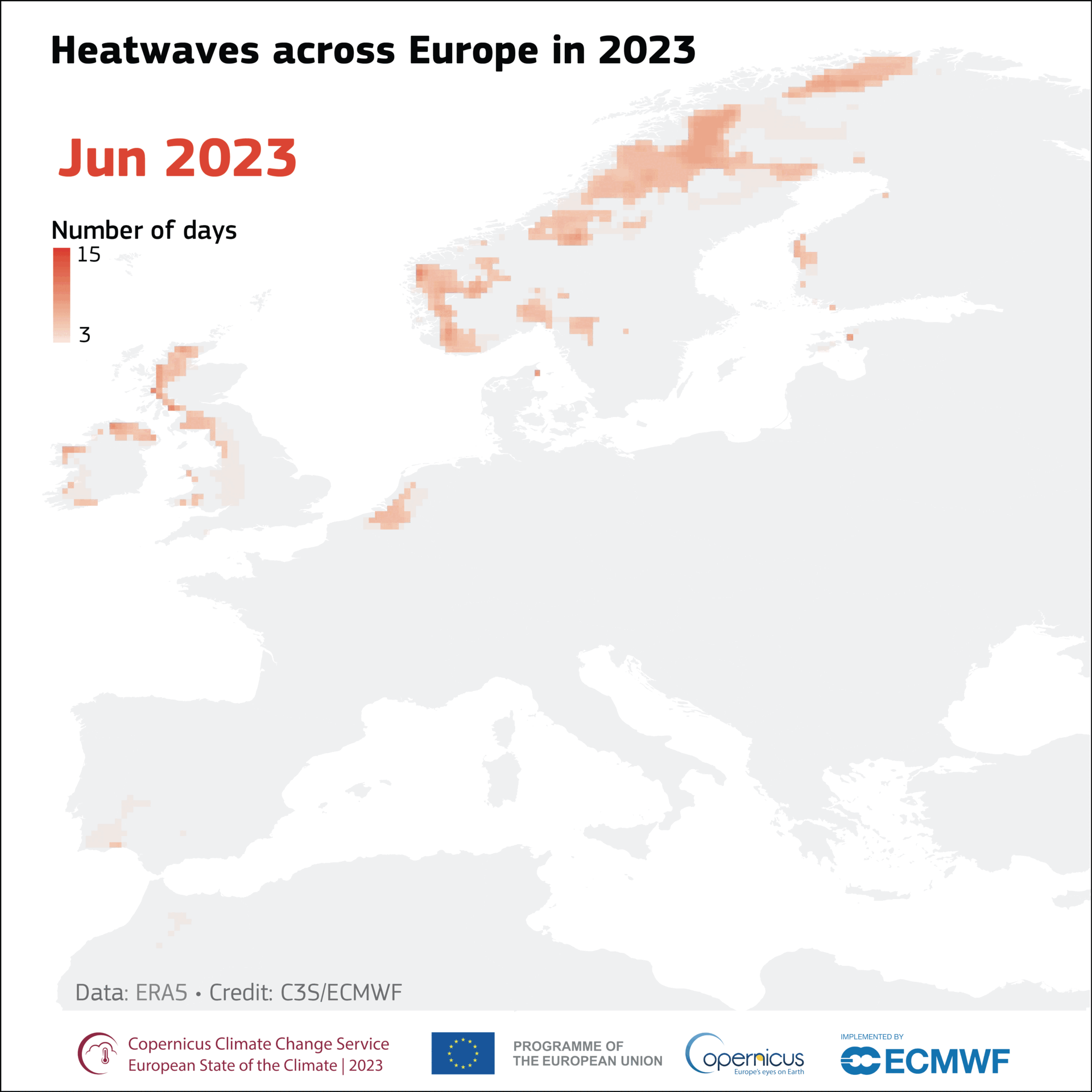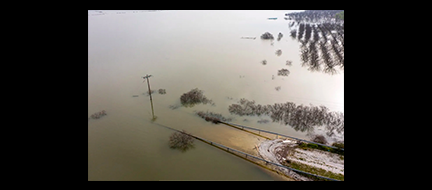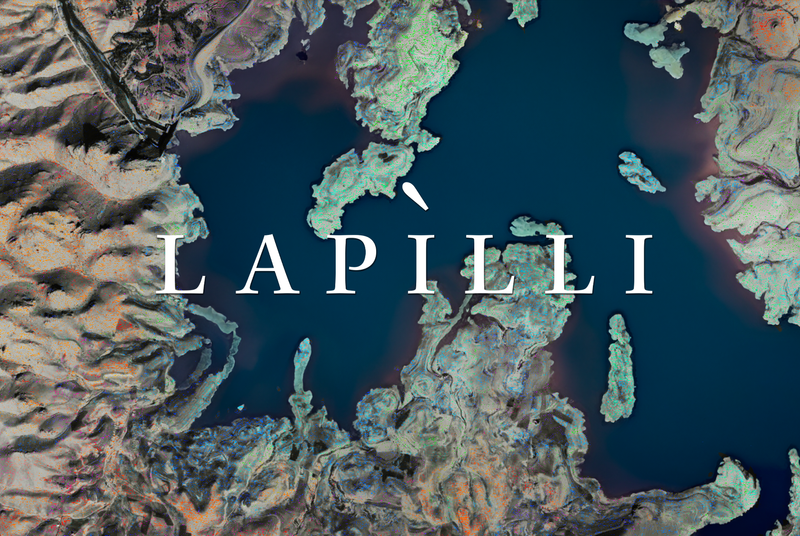This month, Lapilli returns with a selection of news about the environment, raising relevant questions for many nations bordering the Mediterranean Sea. We discuss the recent ruling of the European Court of Human Rights on climate-related rights, which was issued in response to a case brought by a group of elderly Swiss women; the Athens’ sky that turned orange from the sandstorms in the Sahara; lagoons serving as oases for migratory birds in Albania; and river deltas threatened by tourist developments. We delve into crucial topics such as marine areas’ protection in Greece, the return of desalination plants in Sicily, and the satellite images revealing the impact of drought in Morocco. This and much more is covered in this May's Lapilli! If you enjoy it, help us spread the word by forwarding this email to friends and acquaintances. Happy reading!

The right to a clean environment. In April, the European Court of Human Rights (ECHR) issued a landmark ruling: inaction on climate change is considered a violation of human rights. According to an article in DeSmog, Switzerland was found responsible for not taking adequate measures to reduce greenhouse gas emissions, thus violating the right to respect the private and family life of its most vulnerable citizens.
This case marks the first intervention by the ECHR on climate issues. The decision was made after evaluating three cases, including that of the "KlimaSeniorinnen Schweiz," a group of more than 2,000 Swiss women over the age of 64, who have shown to be particularly vulnerable to increasingly intense heatwaves. With the support of Greenpeace Switzerland, the group requested greater commitment from their country to keep global warming within the limits set by the 2015 Paris Agreement, fixed at 1.5 degrees Celsius (2.7 degrees Fahrenheit). The Swiss government acknowledged that warming damages health, but does not consider the KlimaSeniorinnen as victims. The ECHR criticized Switzerland for not clarifying how it would reduce greenhouse gas emissions and for not achieving predetermined reduction targets. The Court's unanimous decision is final and could have some impact on debates regarding the modification of the European Convention on Human Rights to include the right to a more sustainable, healthy and clean environment. Legal actions on climate are becoming increasingly common globally, but this is the first time an international court has ruled on the issue. The ECHR did not specify the precise actions the Swiss government should take but outlined minimum standards, including the need to establish carbon budgets and intermediate objectives, progressive updates and transparency in monitoring progress (DeSmog).
The European state of the climate. Europe is the continent experiencing the fastest warming, according to a joint statement released by the United Nations’ World Meteorological Organization and the Copernicus Climate Change Service to announce the publication of the latest European State of the Climate report, which states that temperatures are rising at about double the rate of the global average.
March 2024 marked the tenth consecutive month with record monthly temperatures, according to Copernicus Climate Change Service, and the average sea surface temperature in Europe reached its highest annual level in 2023 (Check out the latest Lapilli+ to read more about sea surface anomalies in the global ocean). According to the report, dry weather has fueled devastating fires, especially in southern European countries such as Portugal, Spain and Italy. In particular, Greece was hit by the largest forest fire ever recorded in the European Union, which destroyed 96,000 hectares of land. The report also focuses on the impact of high temperatures on human health, noting that the heat-related mortality rate has increased by 30 percent in Europe over the past two decades (The Guardian). But it also looks at possible solutions: The two agencies stated that the continent has the opportunity to develop targeted strategies to accelerate the transition to renewable resources in response to the effects of climate change (Associated Press).

Orange sky. Around April 23rd, the skies of Athens turned orange as Saharan winds carried desert dust north, enveloping the Greek capital in a thin haze of dust and eerie light, according to The New York Times. The sandstorm first hit Libya before moving towards Greece and Turkey (Washington Post). Although this is not a new phenomenon, this dust cloud appears denser than the previous ones that have affected Greece, according to the National Observatory of Athens. This sequence of images captured by the Times depicts the gloomy orange hue that engulfed the entire city, from the Acropolis of Athens to the squares to the busy streets of the Greek capital (The New York Times).
Towards 30x30 targets. Speaking of Greece, the country has also announced the creation of two large marine parks — one covering 3,000 square miles in the Aegean Sea and the other spanning more than 5,000 square miles in the Ionian Sea — thereby extending the currently protected area to approximately one-third of its water bodies, which is in accordance with the United Nations’ goal of protecting 30 percent of land and sea established at the United Nations biodiversity conference in Montreal in 2022.
By 2030, Greece also plans to end bottom trawling in protected waters, which is an activity harmful to marine life and contributing to the release of buried carbon owing to the dredging of the nets. Drones, satellites and artificial intelligence will be employed to monitor these areas (Yale Environment 360).
Water management, desalination in the south. As previously mentioned in Lapilli, the water crisis in Italy has shifted south, with Sicily being particularly affected. Emergency situations related to low precipitation are not always solely in response to climate, but can often be traced to a lack of maintenance and ineffective management of water resources. According to data from the Italian National Institute of Statistics, 42.4 percent of the water entering the network in Italy is lost, highlighting the need to improve the efficiency of water resource management to better address drought-related challenges. The drought commission set up by the Italian government in 2023 has recently launched a data collection initiative to identify strategic projects aimed at improving water management and to understand the extent of fragmentation in water resource management (Il Post).
In Sicily, the region is also reconsidering the possibility of reintroducing desalination plants to combat the drought emergency, as reported by Focusicilia. Between 2010 and 2014, the desalination plants in Gela, Trapani and Porto Empedocle were closed because they were obsolete and expensive. But plans for the reintroduction of desalination plants will no longer rely on evaporation, a method that required the use of fossil fuels, but on reverse osmosis. This technique works thanks to a membrane that retains the salt from seawater, producing fresh water more efficiently and is less harmful to the environment. A new desalination plant is currently under construction on the island and will cost 40 million euros, 75 percent of which will be financed through Italy’s National Recovery and Resilience Plan (Focusicilia).

Drought from above. Satellite images, which were taken in March between 2018 and 2024, were analyzed by the BBC and reveal how Morocco's second largest water basin, the Al Massira dam, located between Casablanca and Marrakech, is drying up. The dam now contains only 3 percent of the average water quantity that it had nine years ago.
This is the result of six consecutive years of drought, where record temperatures have led to increased evaporation.
The images show a transformation of the landscape, depicting green areas drying up, a phenomenon that is not only confined to the area around the Al Massira dam but now extends throughout the country. About 90 percent of water consumption in Morocco is dedicated to agriculture. But some farmers, given the extreme conditions, consider the 2024 harvest already lost. In addition to the impact on agriculture, the lack of rainfall has also affected the famous hammams, which are closed three days a week to conserve water, while authorities have launched a campaign to encourage residents to be more mindful of their water use. These conditions show how sensitive Morocco is to climate change. In these areas, droughts have always been present throughout the country's history, but global climate change is increasing their frequency and intensity (BBC).
Declining populations of migratory birds. Long considered a haven for migratory birds, the Vain Lagoon along the northern coast of Albania is losing this status as rising temperatures damage its wetlands, which has serious consequences for the bird populations that typically stop here. The lagoon, which hosts 196 species of migratory birds, has seen a decline of about 40 percent of these populations according to a survey conducted in January.
Scientists identify various causes, including poaching and collisions with power lines, but increasing temperatures could be an even more decisive factor. The warming of water also contributes to a reduced availability of food for those birds that feed on fish, whose populations are also declining. This is a worldwide threat that requires coordinated actions to address it, said Taulant Bino, who chairs the Albanian Ornithological Association. "No country can fight this battle alone. Climate change and the risks that migratory birds face during their journeys are a global problem" (France24).
Vjosa River Delta at risk. Moving south to the Vjosa River Delta in Albania, there are also migratory bird populations in danger, but for different reasons. Southern Albania stands out as one of the most pristine areas in Europe. The Vjosa River is considered the last undammed river on the European continent that flows freely from the Pindus Mountains in Greece to the Adriatic Sea. However, despite the recent recognition of the new Vjosa Wild River National Park, environmental protection measures are limited to the river itself, leaving the delta exposed to development projects. And that's exactly what's happening as this coastal area is marketed as the “Albanian Riviera” with luxury accommodations (that have ties to Trump's son-in-law, Jared Kushner) and an international airport being planned. These plans have raised concerns among environmentalists, especially considering the announcement of hotels and luxury villas in protected areas of the delta. But the biodiversity preserved by the Vjosa River Delta is crucial for all of Europe. This delta represents one of the few examples of essentially untouched, pristine coastal river deltas that serve as a nesting area for a wide range of water birds, some of which are endangered, such as the Dalmatian pelican (Yale Environment 360).

Posidonia & A.I. Mediterranean seagrasses, particularly Posidonia oceanica, are experiencing a significant decline from human activity and climate change. Many conservation projects have failed due to inadequate monitoring. A study conducted by a few Spanish research centers and published in Nature proposes a new approach that uses artificial intelligence and satellite data to map and monitor these meadows. According to the study, the proposed model has an accuracy rate of 74-92 percent and can be adapted to other regions as well. This method supports the goal of the Mediterranean Posidonia Network to protect these underwater meadows by 2030 and assist each nation in conserving these ecosystems by providing updated maps to prevent future degradation (Nature).

Storms' wrath: Agriculture takes a hit. Lake Karla, which is one of Greece's largest inland bodies of water, was drained in the 1960s to combat malaria and then restored in 2018 as a wetland area to address drought. Following the floods caused by the Daniel and Elias storms last September, the lake has tripled in size compared to its original dimensions. The two floods have damaged vegetation and agricultural activities in the surrounding areas. To illustrate the extent of the phenomenon, the village of Sotirio, which was once surrounded by fields, now lies at the edge of a swamp. The floods and the formation of a marshy area around the lake have damaged cotton crops, one of Greece's main export commodities, which is sparking a debate about the future of this type of cultivation and Greece's role as the EU's leading cotton producer. Even after the floodwaters recede, it’s uncertain whether the agricultural productivity of the fields can be restored despite various initiatives under consideration, including the possibility of creating a canal to drain water into the Aegean Sea and the proposal to build dams around the lake to prevent future flooding (Al Jazeera; Agence France Presse).


LUCIA DE STEFANI
Editor for an American student magazine, she also works as a freelancer writing about photography and illustration. She lives and works in New York, but returns to the Mediterranean as soon as she can.That's it for this month. Thank you for reading this far. See you in June or earlier with Lapilli+.
If this newsletter was forwarded to you, you can subscribe here to continue receiving it. Lapilli is free and always will be, but in case you would like to buy us a coffee or make a small donation, you can do so here. Thank you!
Lapilli is the newsletter that collects monthly news and insights on the environment and the Mediterranean, seen in the media and selected by Magma. Here you can read Magma's manifesto.

